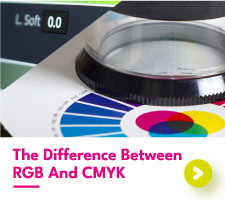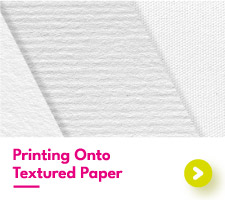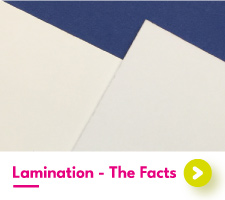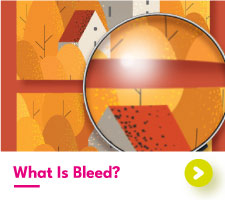What Does DPI Stand For?
DPI stands for Dots Per Inch. It is a common term that is related to resolution, print quality and image quality.
In simple terms, for every inch square of print, there are a set amount of dots that will be printed. The more dots, the better the print quality (there are some exceptions).
In this blog we’ll explain some common questions about DPI and also offer tips so you get the best DPI when printing your flyers or business cards.
What Is DPI In Printing?

When it comes to printing, you’ll hear the term 300dpi thrown around. So, what is 300dpi? While you can print technically at any DPI you like, for a flyer or poster that is designed to be read at arm's length, 300dpi is the standard print resolution that you should design with. Print machinery often has the capability to print at over 1000dpi, however, once you go over 300dpi, the benefit is minimal and you’ll struggle to notice a perceivable difference in the quality of your prints. Designing your print at 300dpi also saves on file size so it takes us less time to load, set up and send your files to print.
If your print is designed to be read at a distance, for example, a banner on the side of a building, you can actually design these at 72dpi (25% of 300dpi). This is a little printers trick as sometimes large banners that are meters in length at 300dpi have a file size that is too large to open in Adobe Illustrator. Reducing the print DPI to 72 (or 25%) means that the file size is also reduced by 25% while not really having an impact on the quality of your large format prints as they’ll be read at a distance anyway.
What Is DPI Resolution?

So, while DPI is just an acronym for dots per inch, the resolution is actually a measurement of the number of dots per inch when we refer to DPI resolution. Put simply, for 300dpi, the printing resolution in this case, refers to the count of dots, so 300 dots per inch.
DPI is specifically used for print as it’s referring to the number of dots produced by the printer (dot density). Resolution can also be used in other scenarios like the resolution of your monitor in pixels. You may have heard of the term Full HD, this is a tag that means a pixel resolution of 1920x1080 which is a measurement of the number of pixels your monitor has in height and width.
Confusing we know, but in terms of print, the DPI resolution always refers back to the number of dots per inch.
As a tip, increasing your DPI will not automatically increase the quality of your picture. For example, if you have a very old image that is only 64 pixels by 120 pixels it will look blocky. Just setting this picture to 300dpi won’t magically add details that weren’t already there, it just means that the blocks, when printed, in any given square inch, there will be 300 dots.
DPI vs PPI
We often get asked, what is the difference between DPI and PPI resolution. This is a bit more simple to answer as it basically refers to a physical resolution versus a digital resolution. Essentially, DPI is a measurement of the amount of dots per inch produced by a physical printer in any given inch squared, and PPI (pixels per inch) is a measurement of the number of pixels per inch square on a screen.
It’s good practice to not get these two confused, for example, you can have a DPI of 300, but a PPI of 90. In this scenario, your prints could look blockier on a screen and smoother when printed. It’s best practice to try and design on high-resolution monitors to get as close to the DPI as possible.
PPI can be difficult to get your head around, as you can have two monitors, both at 1920x1080 pixels, but since PPI is a measurement of the number of pixels in an inch squared, if one monitor was 24” and another 40”, the PPIs would be 90 and 55 respectively. Essentially, there is the same amount of pixels on the screen, but because one monitor is bigger, the pixels are bigger and therefore there are fewer in an inch square. This is not the case with DPI though as if you design to 300DPI, no matter the pixel resolution, the printer will know to convert your file to have 300 dots per inch of print. This won’t add more detail that isn’t there though as we’ve explained.
What Is The Difference Between Pixels And DPI
Let’s go deeper down this rabbit hole, to begin with, pixels are digital and are only ever displayed as a perfect square grid on a monitor, imagine a Greek mosaic, each square tile is a pixel and the more pixels you have, the easier it is to add detail to an image. DPI, or dots per inch, are actually like microscopic polka dots, each with space in between each one so is less precise but often look softer or smoother.
Pixels are made up of RGB colours, if you’re not sure what RGB means we have a blog explaining what is RBG here. Essentially, each pixel can be a mixture of red, green and blue to make the individual pixel appear as any colour you want.
With dots per inch, each individual dot can only be either Cyan, Magenta, Yellow or Black (CMYK). To make the colour, on a microscopic layer, all four colours are laid over each other in a mesh-like pattern of different amounts to create colour.
What DPI Is Considered High Resolution?

So, technically, there is no standard for print like there are for PC monitors or TVs. Print machines don’t have HD or 4K tags that are industry standards. We do get asked what is the standard dpi for print a lot though so it’s best we give an answer that is standard across most printers.
In the print industry, 300dpi is considered high resolution enough to give great looking print at an arm's length and 72dpi is high resolution enough to give great looking print at a few meters away. So if your question is what is a good DPI, your minimum should be 72 and maximum should be 300dpi as any more is overkill.
More specifically, we’d expect business cards, flyers and tags to be 300dpi, and posters or banners to be 72dpi.

 USA
USA FR
FR






































